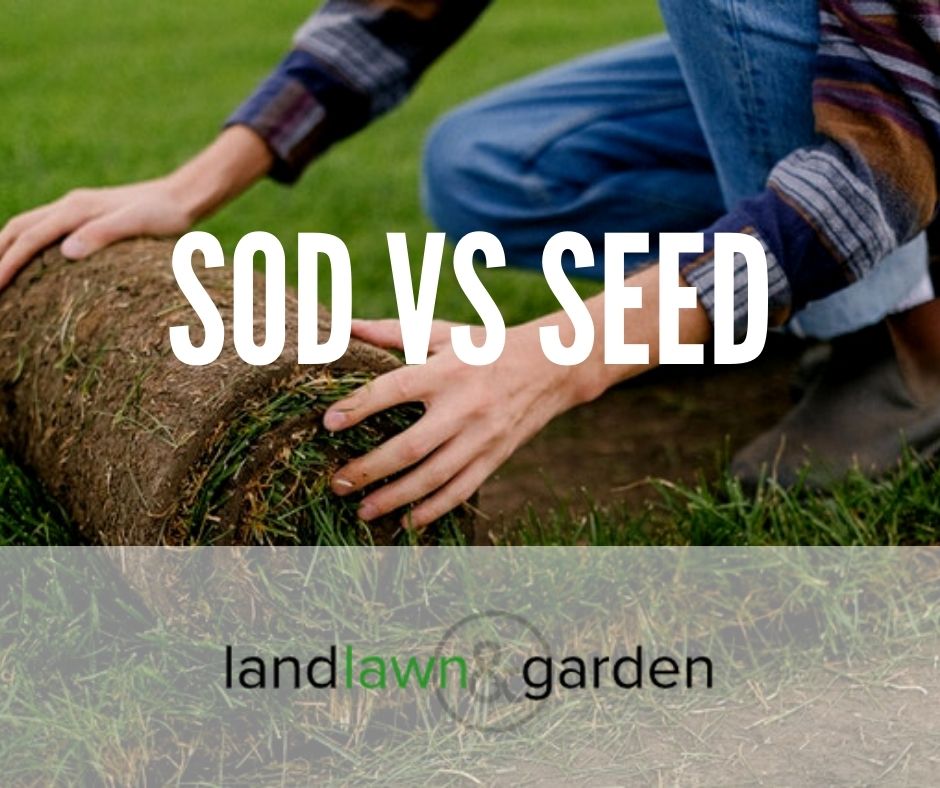Picture it – you are trying to bring your sparse, sad-looking lawn back to life. You apply a liberal amount of fertilizer in the hopes of reinvigorating the soil with nutrients, causing the grass to flourish. Only, you walk into the garden a few days later to find your lawn looking even patchier and browner than before!
Yes you can over fertilize your lawn. Chemical fertilizers contain mineral salts, and if too much is applied to the lawn, grass and soil microbes cannot process all of the nitrogen. Salts build up in the soil, drawing moisture away from the grass. This results in fertilizer burn – grass turns brown or yellow and can die.
Fertilizer burn or lawn burn is a common problem because many people are unaware that too much fertilizer can be bad for grass. Luckily, these are things you can do to remedy the burnt grass. You need to act quickly because if left too long, your lawn may need to be replanted. There are also ways you can avoid the problem entirely.
Quick Links
How Does Fertilizer Burn Grass?
All fertilizers have an NPK ratio, which tells us the relative quantities of nitrogen, phosphorus, and potassium. Lawn feeds or fertilizers that are designed to quickly green up your lawn have high amounts of nitrogen, which plants use for growing foliage.
Traditional lawn feed and agricultural fertilizers release minerals very quickly into the soil. If too much is applied, the grass cannot use it all, and excess nitrogen salts build up in the soil. This draws moisture out of the grassroots, “burning” or drying them out. The grass turns yellow or brown. Telltale signs are dead-looking patches or lines on the lawn.

Causes of Lawn Burn
Most times, lawn burn is not caused by the fertilizer itself but rather by the incorrect application of it. Lawn burn occurs due to:
- Not reading the instructions and application rates on the fertilizer label.
- Guesstimating fertilizer quantities rather than carefully measuring.
- Miscalculating the size of the lawn, thereby unintentionally overapplying.
- Not watering the lawn sufficiently in the weeks before feeding.
- Fertilizing lawn when the weather is too hot.
- Spilling fertilizer on the lawn and overlapping areas with the spreader as you push it over the whole lawn.
How to Fix Lawn Burn
If you have spilt granulated fertilizer on the lawn, the best emergency solution is to use a vacuum cleaner to quickly remove as much as possible before it dissolves. Thereafter, water the affected area of the lawn liberally. The idea is to dilute the minerals and leach them out of the soil. Place a sprinkler on the area and leave it on until the ground is saturated. It is best to water in the morning to minimize the amount of water that evaporates.
Watering thoroughly on the day of the spillage and for a week thereafter is usually enough to avoid lawn burn. However, if you do not water quickly enough, yellow or brown spots may develop, and it will take longer for these to disappear.
To fix yellow and brown lawn burn spots, water the affected areas and the healthy grass around them thoroughly for a week or two. After 7 to 14 days, you will start to see new growth – the spots will begin to fade. If they do not fade, it means that the lawn burn was severe enough to kill the grass. The only way to fix this is by planting new grass.
Rake the dead grass on the burnt areas to remove it and expose the soil to light. If the lawn has been watered well for at least a week, evenly sprinkle grass seeds onto the bare areas and press them down against the soil. This works well for small burnt patches. For larger areas, it is easier to replace the grass with sods.
Nurture the new grass carefully until the lawn has re-established. Water it regularly – daily until the grass has grown proper roots, and two or three times a week thereafter. Apply fertilizer to the new grass 2 to 3 weeks after planting, and do so carefully this time, to avoid making the same mistake twice!
The new grass should be mowed when it grows 3 inches tall. Regular trimming will encourage rapid growth but be careful not to cut it too short as this will damage the grass.
Tips to Avoid Lawn Burn
Summer is a time when our lawns are under the most stress – we spend more time trampling on them, they are heat stressed, and if you don’t live in a summer rainfall area, they are drought-stressed too. Unsurprisingly, summer is lawn burn season. Here are a few things to remember to avoid nasty burnt spots on your lawn this season:
- Water consistently. Keeping the soil moist is vital so that mineral salts from fertilizer stay dissolved and do not precipitate out of solution and build up in the soil, killing roots.
- Use organic fertilizers. Compost is way cheaper than chemical fertilizer, and it does not cause lawn burn! Compost does not cause mineral salt to build up in the soil, so it will not lead to over-fertilization. Instead, compost contains organic matter that feeds the microbes in the soil so that they can nourish the grass.
- Slow-release fertilizer. Sometimes compost is not available, so you have to opt for using chemical fertilizer. If so, choose the kind that releases minerals slowly, over a longer period of time, thereby reducing the risk of lawn burn.
- Granular rather than liquid fertilizer. Liquid fertilizer is easier to over-apply because it is difficult to see where you have poured fertilizer and if you spill, you cannot remove the excess. Choose granular fertilizer instead.
- Read and carefully follow instructions and application rates on the packaging.
- Do not fertilize dormant, weak, or stressed grass. It is a common misconception that you should fertilize grass when it looks like it’s struggling. In the late summer, when the grass is stressed and going into dormancy, water it thoroughly on a regular basis and spare the fertilizer for spring when it is ready to grow again. When grass is weak or stressed, it cannot process large amounts of nutrients, so lawn burn will happen if you apply even the correct amount of fertilizer.
Wrapping Up
Applying too much fertilizer or fertilizing at the wrong time, using the incorrect method can cause lawn burn. The grass is not able to take up all the nutrients at once, and the nutrients build up in the soil as salts, where they draw moisture from the grassroots, damaging or even killing the grass.
Lawn burn is a common problem, especially in the summertime. Sometimes people apply fertilizer to their lawn haphazardly or do not calculate the area of their lawn correctly, and thus miscalculate the application rate they need.
Lawn burn can be remedied if you act quickly. Water the grass thoroughly on the day that you over-fertilize and every day for a week thereafter. This should fix the problem before yellow or brown spots appear.
If you do not notice a fertilizer spillage until it is too late, water the area well for a week or two and see if the grass regrows. If not, you will need to reseed or re-sod the lawn in the burnt areas.

Too late to fix the lawn burn?
If the damage is done and you are in need of new grass, you should read our article comparing sod VS grass seed. You will have all the knowledge you need to pick the right option for you and your situation.

Kevin is the owner of Land Lawn & Garden. In addition to taking a lot of pride in his lawn at home, he also helps manage the family land. You can find more about him here.

